
Natural remedies against vibriosis in shrimp culture - Liptosa
Phytotherapy provides efficient solutions to the cultured animal helping them to fight against parasites, bacteria and/ or fungal pathogens. Preventive strategies together with best management are vital for better profitability and sustainable farm production. The continuous inclusion of phytobiotics in the feed produces healthier animals, with better immune system and growth performance. An experiment was carried out with the phytobiotic from Liptoaqua-Liptosa, Spain, made with organic acids, plants and essential oils in Kasetsart University for 60 days showed positive results in survival and growth in Pacific white shrimp. The study started with post larvae (PL10) transported from the hatchery and acclimated for 2 days in fiberglass tanks at the Aquaculture Business Research Centre (ABRC) laboratory. Nine fibreglass tanks (500 L) were used in this experiment and shrimp were stocked at a density of 80 shrimp/tank (120 PL/m2). Salinity during the acclimation period and experiment was maintained at 25 ppt.
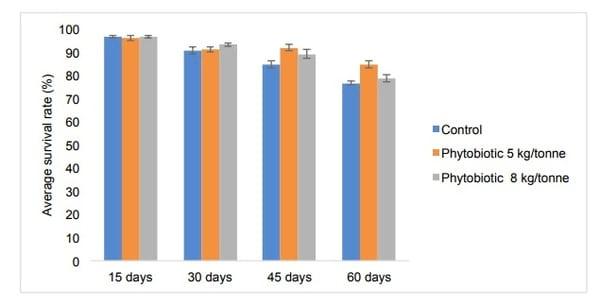 Figure 1. The average survival rate of Pacific white shrimp at 15, 30, 45 and 60 days of feeding with different diets.
Figure 1. The average survival rate of Pacific white shrimp at 15, 30, 45 and 60 days of feeding with different diets.• Phytobiotic inclusion at 5 kg/tonne; and
• Phytobiotic inclusion at 8 kg/tonne
Growth and survival
Our results showed that shrimp fed with the phytobiotic at the dose of 5 kg/tonne had the highest survival rate of 84.7±1.15%, which was significantly higher than the group fed with phytobiotic at 8 kg/tonne (78.7±1.15%) and the control group (76.7±1.15%) (P< 0.05, Figure 1).
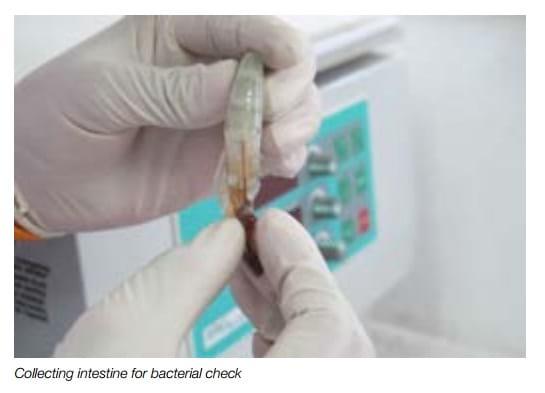
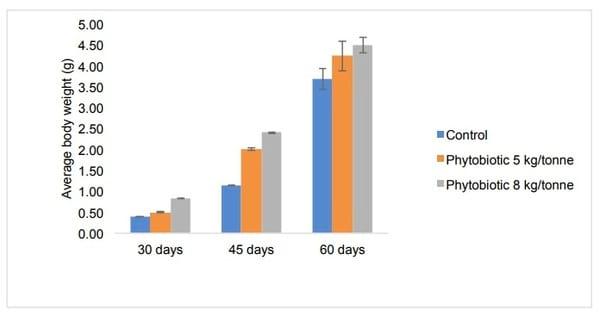 Figure 2. The ABW of Pacific white shrimp at 30, 45 and 60 days of feeding with different diets.
Figure 2. The ABW of Pacific white shrimp at 30, 45 and 60 days of feeding with different diets.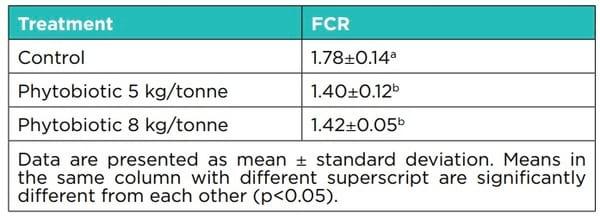
The average total number of bacteria and Vibrio spp. in the hepatopancreas of shrimp is shown in Table 3. Shrimp fed with the phytobiotic at the dose of 5 and 8 kg/tonne had significantly (P< 0.05) lower number of total bacteria and Vibrio spp compared with the control group over the 30 days until 60 days feeding period.
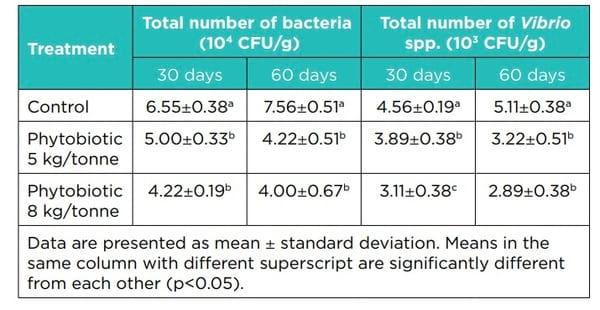


Dear Subashni,
The MIC done at Kasetsart University showed a concentration of 10mg/ml at 10*6 CFU for V.parahaemolyticus white feces and EMS strains. Feed intake % was the same for the 3 batches. With phytobiotics not always the best dose is the higher. Plants can have a strong flavour and sometimes animals just reduce the intake because of that, that is why lower doses sometimes shows better results.
Despite we have not done toxicity analyses to this specific phytobiotic, from our experience we know we are far from the maximum level of toxicity. Of course, you can use doses below 3kg, as said, that depends on % feed intake, as well as on results you want to achieve, maybe you just want to use it as a growth promoter or as bactericidal or intermittently, etc. But our recommendation is 3-5kg/Mt at first instance.
For any more detail info please you can also contact me at Cristina.garcia@liptosa.com
Dera Dr. Christopher Hettiarachchi. Thanks for your comments.
Regarding your questions
Liptofry has a strong bacteriostatic power so is useful to reduce v. Parahemliticus concentration during clinical episodes.
Doses must be applied according to rate feeding.
Recommended doses 3-5 Kg/Mt feed .; other positives effects of Liptofry such as better growth appears in this range of use.
Regards.

Dear Subashni Bhoopathy,
I Think Dr. Niti used fish oil to bind the feed with our phytobiotic.
About the FCR, these prebiotics are immunostimulants helping the animal grow better and more efficiently, the better health has the shrimp the better will eat, therefore nutrient absorption is more effective and so the animal grows faster, improving zootechnical parameters as FCR, ABW, SV.
Regards,

Hello Hoang,
LIptosa is a Spanish manufacturer of additives phytobiotics and Liptoaqua is the aqua department. Our additives are natural growth promotors and immunostimulants working on gut health through prebiotics. We manufacture tailor made additives for each species and pathology. We have phytobiotics for fish and shrimp regarding the different pathologies: bacteria (gram + and -), intracellular parasites (gregarines) and ectoparasites( gill and skin such as monogenea, gyrodactilus, trichodinas...), etc.
Please, once you have the translation done and uploaded I would appreciate you send me the link to cristina.garcia@liptosa.com
Regards,








.jpg&w=3840&q=75)